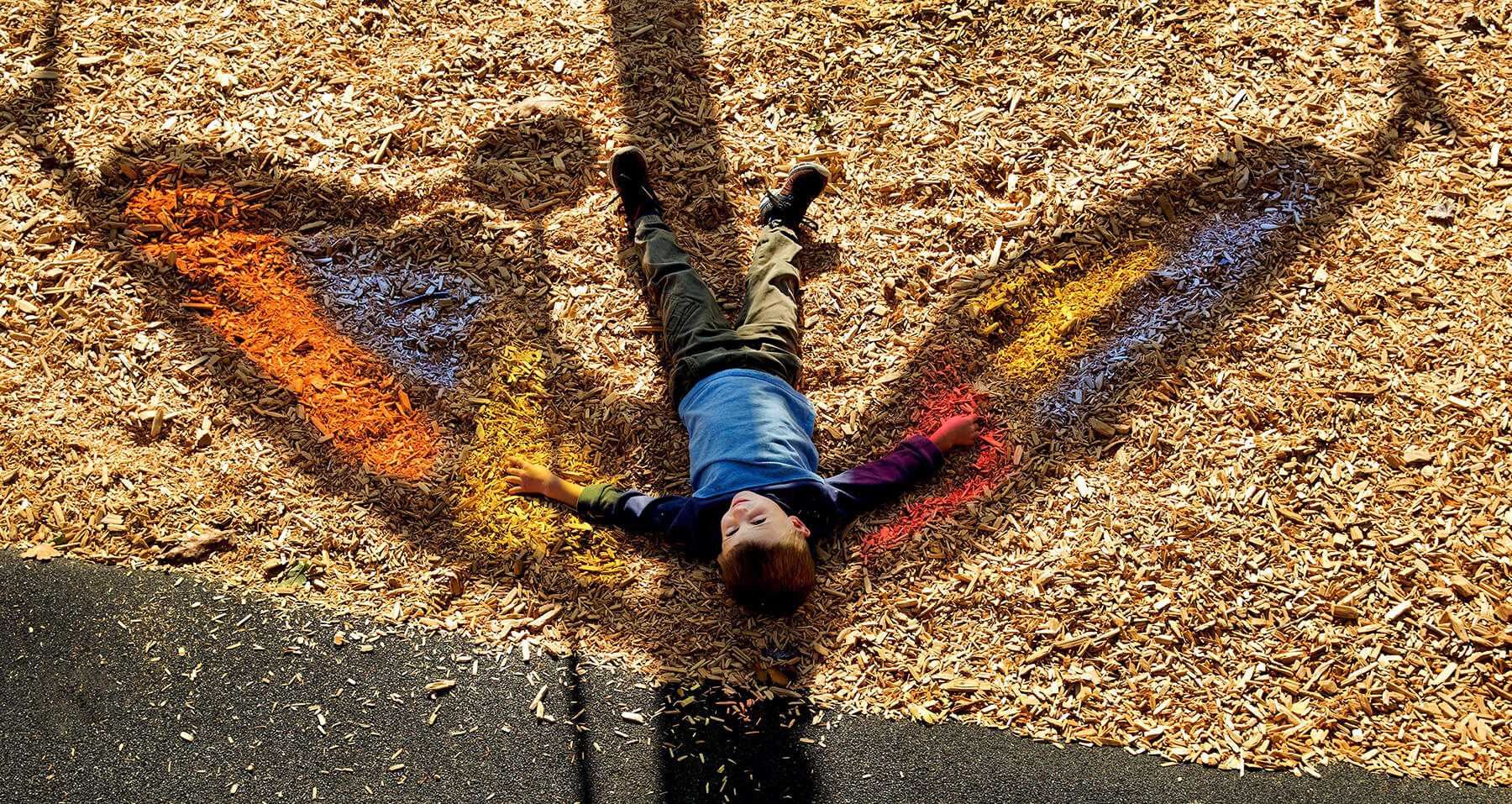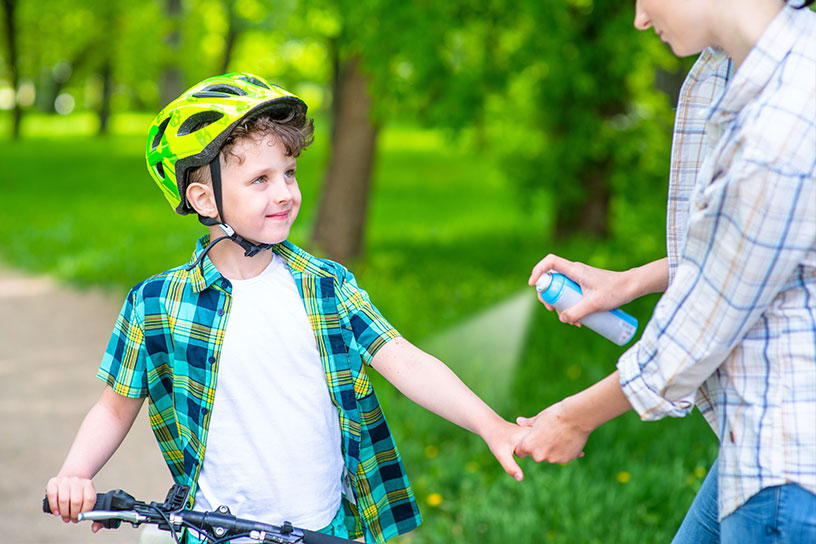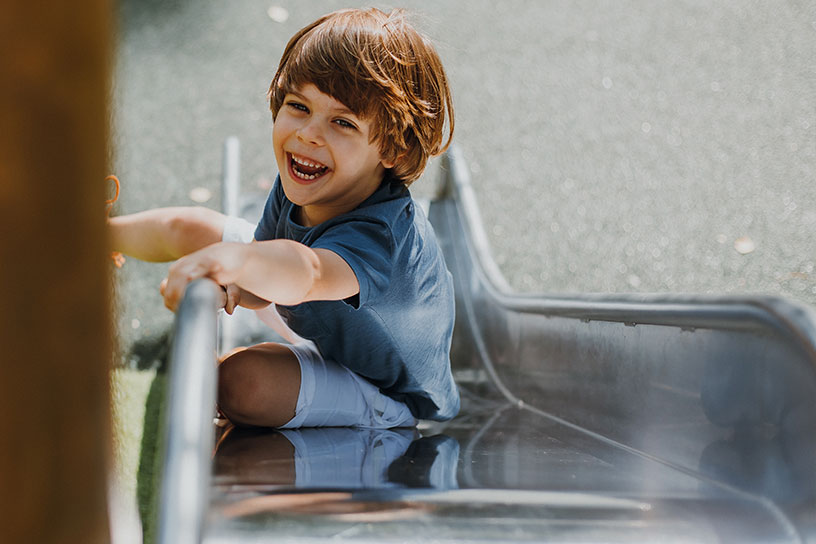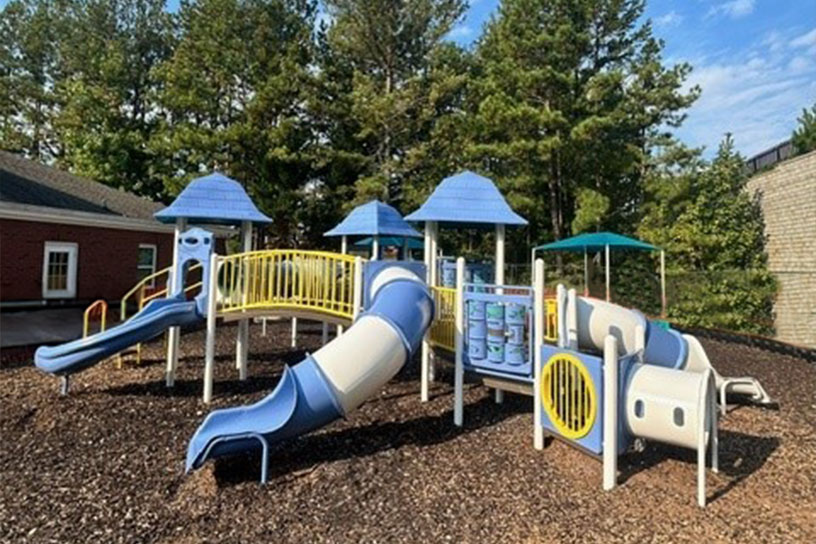Each year, thousands of children are injured while playing on playgrounds. The nature of the surfacing under and around playground equipment can play a big role in determining safety. Surface impact testing helps you ensure your surfaces are safe for children at play.
What is Surface Impact Testing?
Surface impact testing simulates a child falling onto a playground surface from a variety of heights to determine injury potential. It is an important measure to take to ensure everyone on your playground can play safely. Regardless of the chosen material, every surface degrades over time, ranging from normal wear and tear to more extensive damage.
When it comes to impact testing, different playground surface materials have varying benefits and challenges to consider.

Loose-Fill Playground Surfaces
Opting for loose-fill playground surfaces, such as Engineered Wood Fiber (EWF) or Loose-Fill Rubber, can have a lot of benefits. In general, these options are cost-effective and have good shock absorption.
However, they can degrade and thin out over time, and therefore require more maintenance to ensure ongoing safety. And, loose-fill surfacing can move, shift, and erode in high-traffic areas, like under swings or slides.
Engineered Wood Fiber
Engineered Wood Fiber is an attractive, affordable, and biodegradable surface solution for a playground. However, it's important to check the source of the material. Since EWF can be used for many applications, some may contain hazardous chemicals or loose hazards like nails and glass. EWF also degrades over time, so plan to replenish it every year to maintain safety standards.
Loose-Fill Rubber
With adequate shock absorption, recyclable options, and a slower degradation process than EWF, loose-fill rubber is another good, safe option for playground surfacing. However, it is important to remember that rubber retains heat, and may become uncomfortable to play on during hot seasons.

Unitary Playground Surfaces
Unitary surfaces are solid surfacing options made of tiles or rolls. These surfaces require professional installation for insurance and warranty purposes. They tend to require less maintenance than loose-fill surfaces over time.
Bonded Rubber
Bonded rubber has lots of natural properties that provide excellent shock absorption, in addition to providing uniform impact resistance throughout a playground. This surface type also remains unaffected by temperature and is generally slip-resistant.
However, unitary surfaces can be costly to install and may not be as resilient as loose-fill surfacing. They also can degrade or lose their shock-absorbing properties over time. So, it is important to test your unitary surface regularly to ensure they continue to meet safety requirements.
Rubber Tile
Rubber tiles designed for use as a playground surface have a few advantages and benefits. Tiles designed for use on playgrounds are typically rated or certified for specific fall heights that are outlined by the manufacturer. Always consult a playground designer and installer to determine the correct tiles to use on your playground.
While these tiles often have a long warranty life, you should still consider regular testing to ensure the best protection for families and children.
Poured-in-Place Rubber Surface
“PIP” Rubber is an extremely durable and highly customizable playground surface. These surfaces should always be installed by a certified professional. Poured-in-place rubber is one of the best surfaces available for impact absorption and is hard to beat for durability and long-term value.
Consider Surface Impact Testing
A playground should be a safe place for children to run, jump, and soar with a soft place to land. No matter which playground surface material you choose, it is crucial to make sure that it will meet safety standards now and in the future.
At Playground Guardian, our surface impact testing helps to keep parks and playgrounds safe by utilizing top-of-the-line surface impact testing methods. With the use of the ST Impact Analyzer CH™ drop test, Playground Guardian is able to simulate the actual impact of a child hitting the surface, determining the safety of children when falling from specific heights.
We also use the Triax 2010 Safety Impact Test, which transmits data on the maximum deceleration of gravity (GMAX), as well as the severity and duration of impact, to a handheld computer for thorough and efficient analysis.





